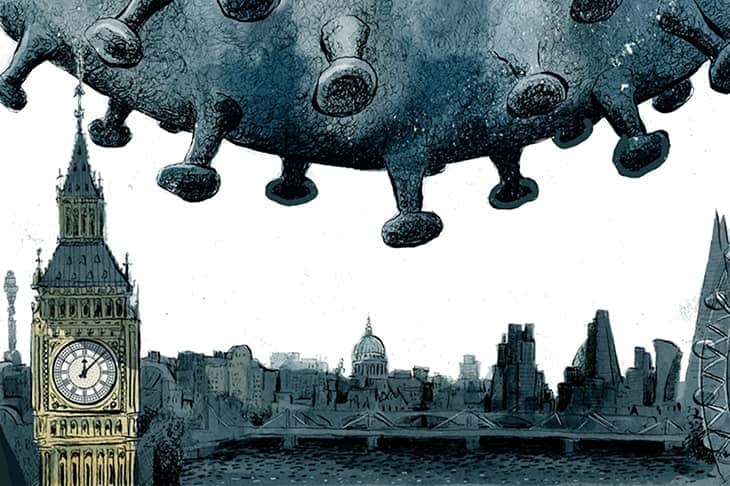For some it was the taped-off park benches, or the sight of police officers handing out fixed penalty notices to sunbathers. For others it was the sheer numbers of deaths being reported in inner boroughs. London in the spring of 2020 was definitely not the place to be. As with other world cities, it faced what seemed an existential crisis. The streets quickly drained of people, and those who could fled to second homes in the country.
The voracity with which Covid-19 spread sparked a fear of living at high densities. Pundits in Britain and America quickly proclaimed the death of cities. The belief was that remote-working had freed people from the constraint of living close to the office and they would now opt for quieter lives in smaller towns and suburbs. The US satirical magazine the Onion caught the mood, depicting a depopulated Manhattan suddenly colonised by hordes of northern white rhino.
Yet two years later, cities are back – faster than many thought possible, and few more so than London. The Pret Index, a proxy London foot-traffic measurement based on transactions at the sandwich chain across the city, has even surpassed its pre-Covid baseline in the West End. Restaurant reservations on OpenTable are at 89 per cent of pre–pandemic levels. In January, house prices in the capital grew at their fastest rate since 2016, and rents are back to where they were before Covid. Estate agents report large numbers of clients who fled London now seeking to return.

Why did anyone think it would be any different? Before the pandemic London had a claim to be the most desirable city on Earth, judging by the sheer numbers of people from all over the world who wanted to live there.







Comments
Join the debate for just £1 a month
Be part of the conversation with other Spectator readers by getting your first three months for £3.
UNLOCK ACCESS Just £1 a monthAlready a subscriber? Log in